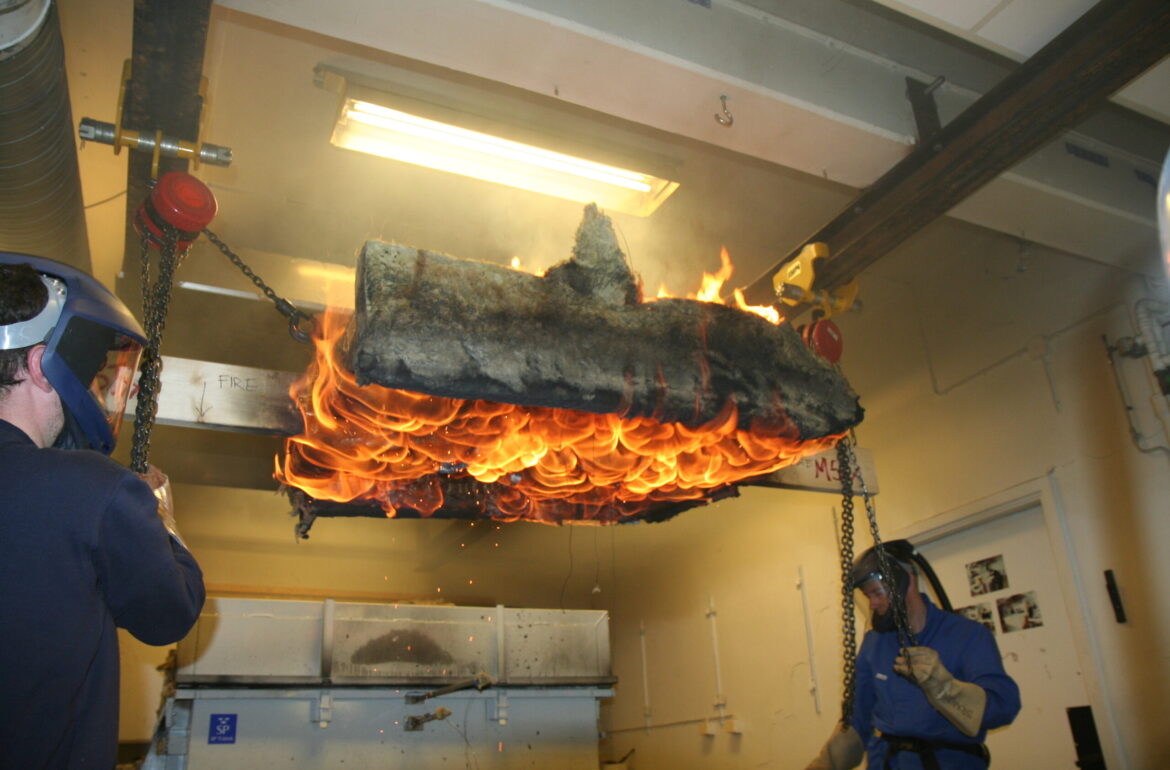TalTech civil engineers have developed a theoretical design method that allows more secure and cost-efficient construction of timber structures.
For the last four years, the Structural Engineering Research Group of Tallinn University of Technology, with support from personal research funding (PUT, i.e. state funding for high level research projects), has analysed fire resistance of timber structures, by taking into account the effect of different insulation materials used in construction.
The head of the research group, Professor at TalTech School of Engineering, Department of Civil Engineering and Architecture, Alar Just says, “The aim of the research work was to significantly contribute to updating and flexibility of the standard for fire design of timber structures in force in EU already since 2004, in order to ensure more cost-effective construction.
Developed countries tend to establish construction quota, in particular, with regard to the ecological footprint. The quota indicate that timber is the most preferred building material. In Europe, this is the case for example in Sweden, Norway and France. On the other hand, most countries in southern Europe prefer to use concrete for construction. The reason for this is not the lack of timber, but traditions and limited experience and skills.
The research of the Structural Engineering Research Group of Tallinn University of Technology focused on identification of the fire resistance of building material prior to the design phase. So far this has been done primarily by full scale fire tests (e.g. conservative England still does not recognise any other methods of analysis in practice). However, full scale fire tests are far from being a sustainable and environmentally friendly method of analysis. Our researchers offer an alternative, a more inexpensive and flexible theoretical design method.
Professor Just says, “We improved the current fire resistance design methods, based however on the database of conventional full-scale fire test results. It has been proved that the improved theoretical design methods are much faster and more comprehensive compared to the current expensive and labour-intensive full-scale fire tests, and they are completely reliable.”
The results of the analysis of a fire test are strictly limited to one particular tested structure, but the new theoretical design methods allow the effect of different components on fire resistance to be taken into account and they can be applied more widely than just to one specific structure.
“For example, in the last decades gypsum board was practically the only fire-resistant insulation material allowed to be used. The results based on the new fire resistance calculation methods allow use of other alternatives, e.g. much inexpensive and environment friendly clay plaster, the qualities of which are not worse that these of a gypsum board. In the future, we certainly want to investigate other natural insulation products,” says Alar Just.
Professor Just is a member of the structural fire design team of the EU design standard Eurocode 5. In fact, the research groups involved in the fire-resistance analysis of timber structures in Europe can be counted on the fingers of one hand; top-level research in the field is carried out, besides TalTech, also in Switzerland, Germany, Scotland and Scandinavia. The results of the analysis carried out by TalTech researchers will be taken into account in the new Eurocode coming into force in 2022.
Additional information: Professor of TalTech Structural Engineering Research Group Alar Just, alar.just@taltech.ee
Original post compiled by: Kersti Vähi, TalTech Research Administration Office
 Back
Back



